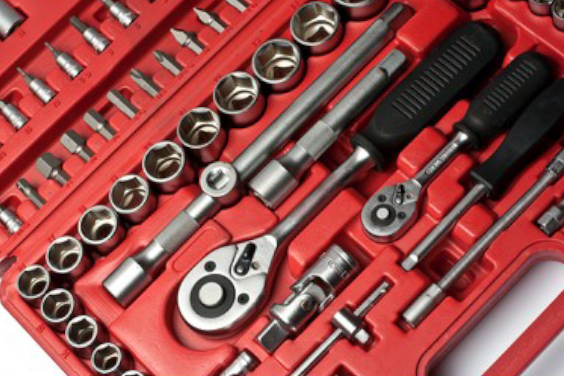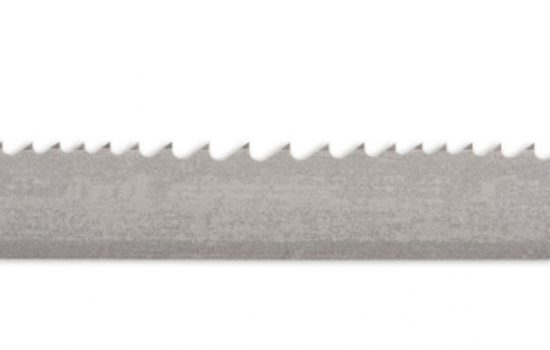
Tool and die making is the professional skill of creating stamp dies, plastic molds, and tools and equipment for mass manufacture of solid products. The majority of the work performed at tool and die workshops is the manufacturing of press working dies. The majority of press working dies are used in the production of sheet-metal parts ranging in size from the finger stop on a dial telephone to the panels of an automobile body.
A comprehensive array of NE blocks for eroding that cover a wide range of materials is required to suit the various criteria for cutting steels used in die production. Whether you require steel or plastic injection molds, this article describes the different considerations and requirements for the materials used in this process. Read on to find out more.

Source: Pinterest
When choosing the right cutting steel, the most significant characteristics are hardness, wear resistance, and toughness. Because these features commonly contradict each other, while making a decision, compromises are frequently required. This is usually accomplished by the use of working hardness or specialized surface treatment.
The choice of cutting steel, and its working hardness, is mostly determined by the thickness and strength properties of the material to be cut. The greater the thickness and strength of the strip material, the greater the load on the die’s active elements.

Source: Unsplash
There is a range of materials used for die making, these include(but are not limited to);
1.2379 steel is regarded as the “classic” steel in die production. Because of its excellent dimensional stability upon hardening, this material is also employed as a full cutting die plate. It is typically used for medium strength (up to 400 N/mm2) strip material. The working hardness ranges between 60 and 62 HRC.
1.3343 high-speed steel (HSS) is a common metal for dies and cutting parts. It has stronger wear resistance and hardness than the material 1.2379. It is utilized for medium-strength (up to 500 N/mm2) strip material, particularly thick sheets. The operating hardness ranges between 63 and 65 HRC.
Powder metallurgy steels have a rather high toughness due to their homogenous structure. The material grade 1.3344 PM (PM23) is utilized for heavy-load dies and cutter punches. It is especially useful for strip material with strengths of up to 600 N/mm2. The working hardness ranges between 63 and 65 HRC.
The corrosion-resistant ubiquitous carbide CF-H40S+ has outstanding balance and provides a good blend of hardness and shatter toughness with good edge stability. Maximum wear resistance ensures that the die and punch will last as long as possible. The metal is utilized for high-strength strip products.
A beginning hole is advantageous for wire EDM since otherwise the EDM contour cannot be optimally established, resulting in significant wear if the wire is inserted from the side. As a result, NE blocks for eroding can be built and ordered with up to ten adjustable starting holes.
Carbon steel contains manganese ranging from 0.2 to 0.45, carbon ranging between 0.90 and 1.15, sulfur 0.025, phosphorus 0.025, and silicon 0.16.
Carbon Block Steel has manganese in the range of 0.50 to 0.70, carbon in the range of 0.55 to 0.65, chromium in the range of 0.60 to 1.10, and nickel in the range of 1.25 to 1.75.
Manganese 0.25, tungsten 1.75, and carbon 1.20 make up this Tungsten Oil Hardening Steel.
This High-Alloy Oil-Hardening Steel is naturally non-deforming. It has a chromium content of roughly 12.00, carbon content of 2.15, and the manganese content of 0.35. Tungsten, Nickel, and Vanadium are some of the other elements that can be added to this steel.
Manganese 2.5, carbon 0.90, molybdenum 1.00, chromium 1.5, and silicon 0.30 make up the Manganese Air Hardening Steel.
This Chromium Air Hardening Steel comprises 5.00 chromium, 1.00 carbon, 0.50 manganese, 1.00 molybdenum, 0.25 silicon, and sometimes vanadium 0.50.
These are the same as High-Alloy Oil-Hardening Steels. It has a chromium content of 12.00. Carbon ranges from 1.00 to 2.15, with molybdenum 0.80, silicon 0.35, manganese 0.35, and sometimes vanadium 0.50 added.
The die making process can only be highly efficient if the materials used are up to industry standards. In today’s world, there is a concept of 3D plastic prototypes that applies in pretty much all production processes. This saves you time and money you would otherwise spend correcting the production mistakes. The good news is that you can get this from your trusted injection mold manufacturers in the industry.
Also, we do recommend that you contact a plastic injection mold maker in China for your injection molding die needs. As the reputation goes, they will bring value for your money. All the best!
+86-755-8524 1121
marketing@rydtooling.com
No. 2, HongKan 1st Road, YanChuan Community, YanLuo Street, BaoAn District, ShenZhen City, China. Post Code 518105.
Subscribe to our newsletter to get manufacturing news and updates!
